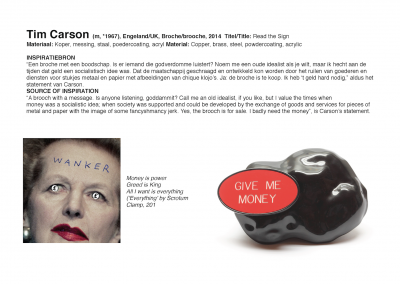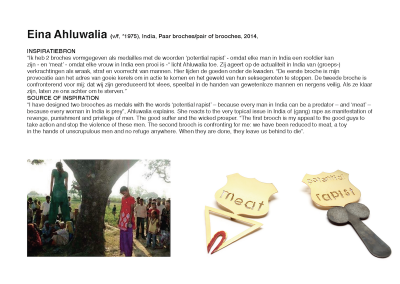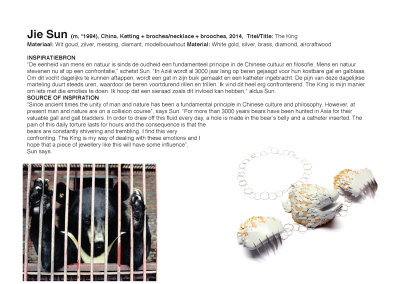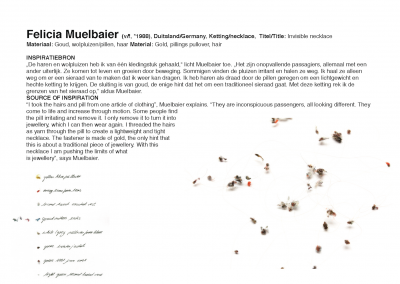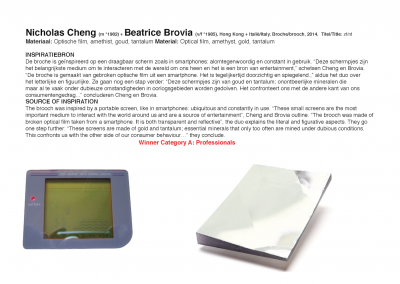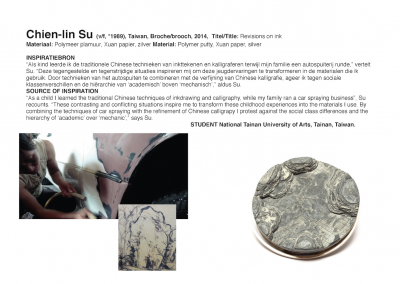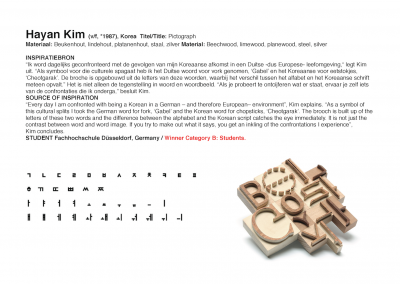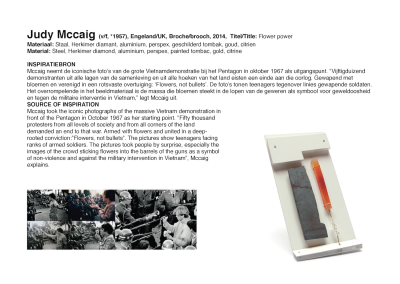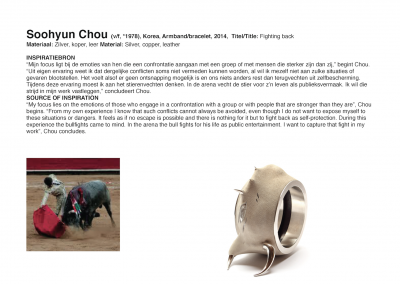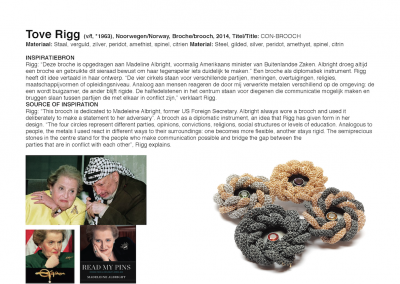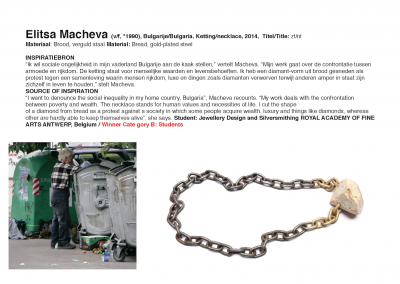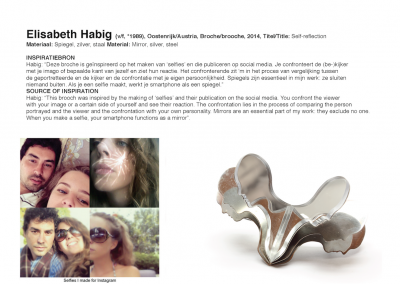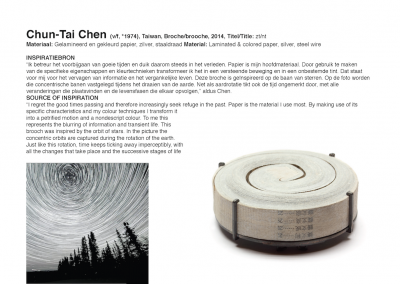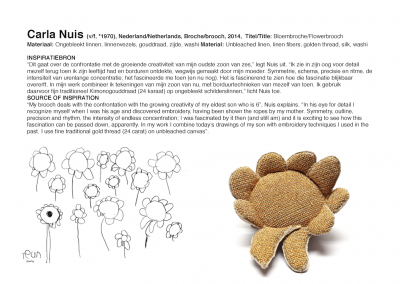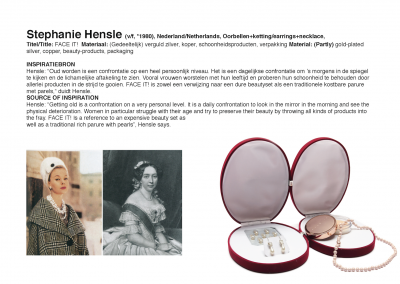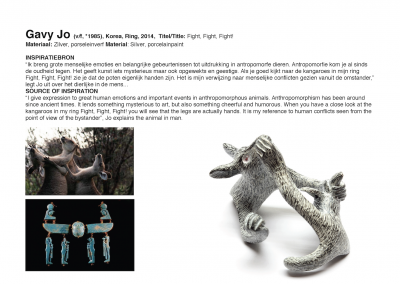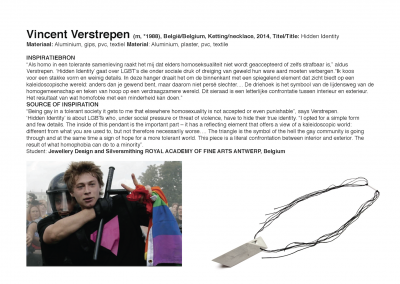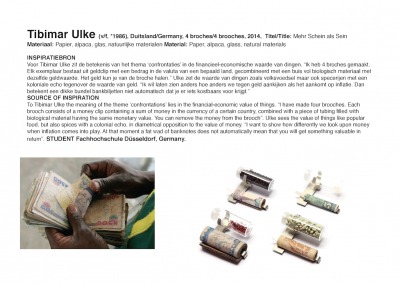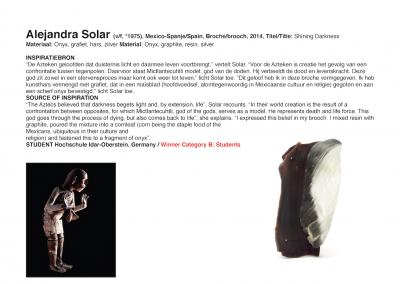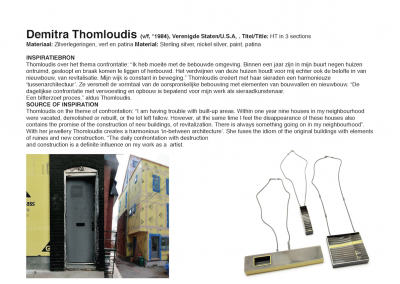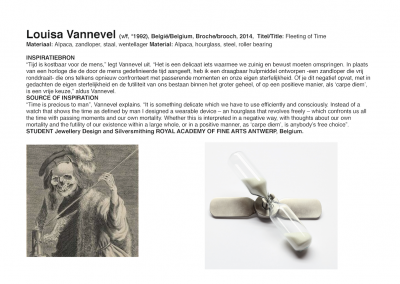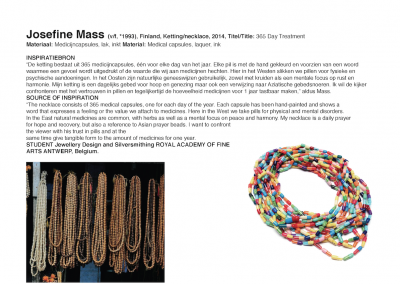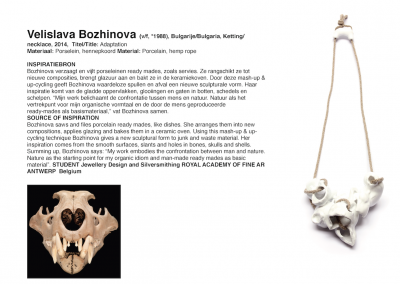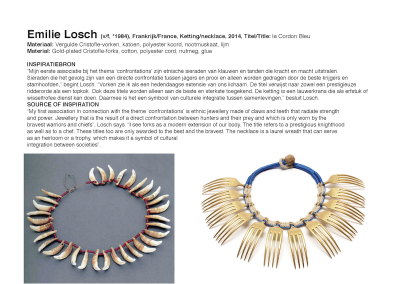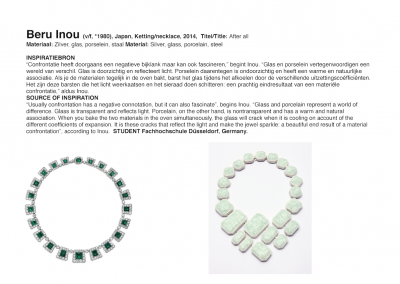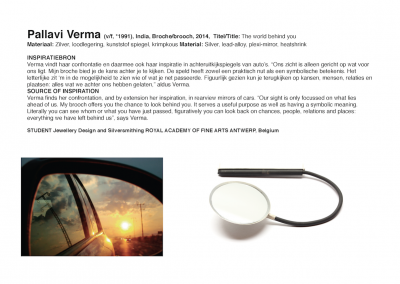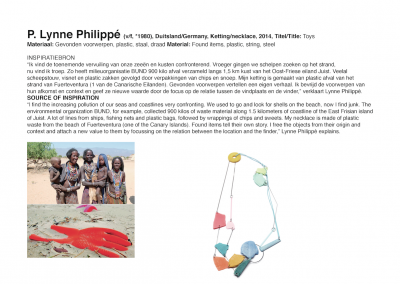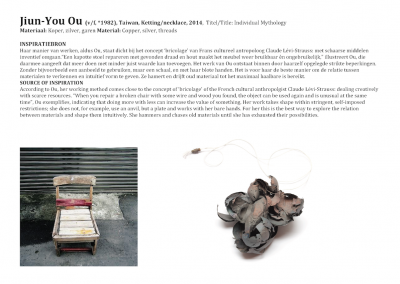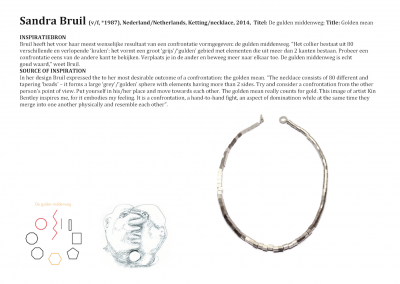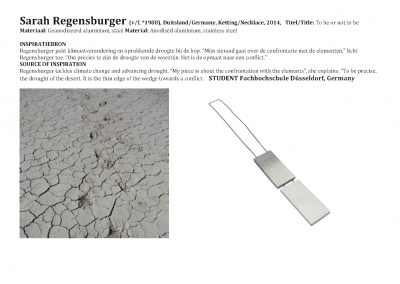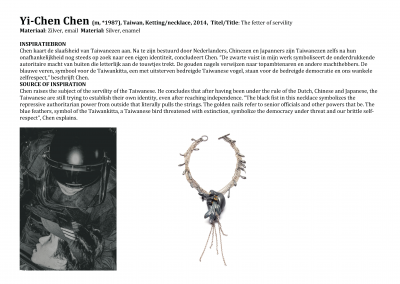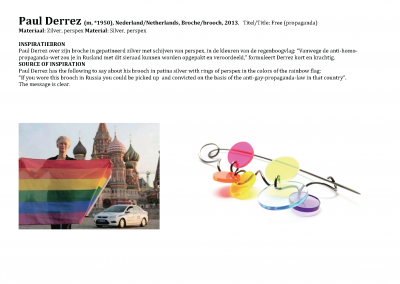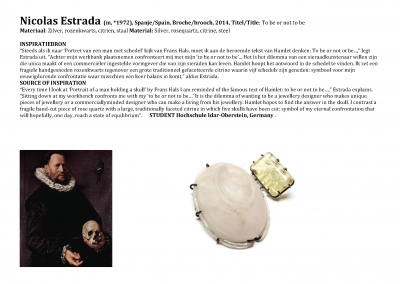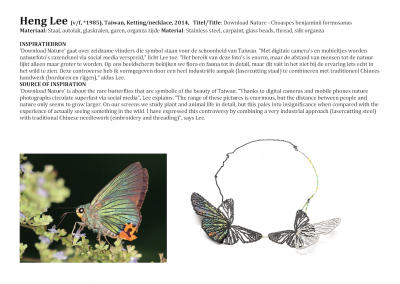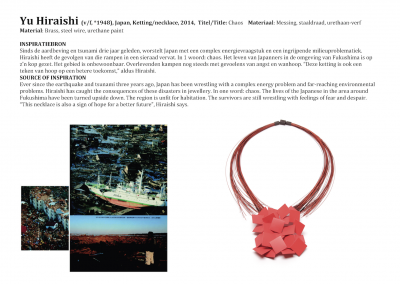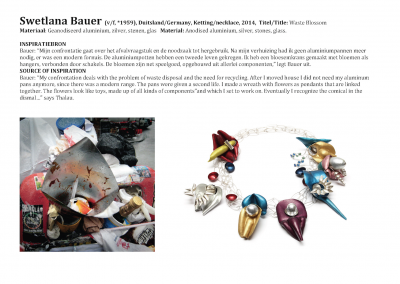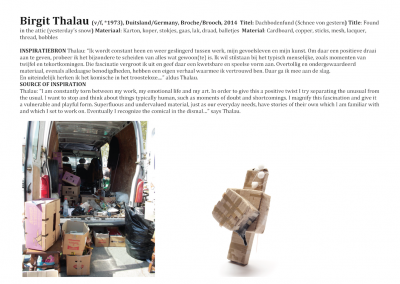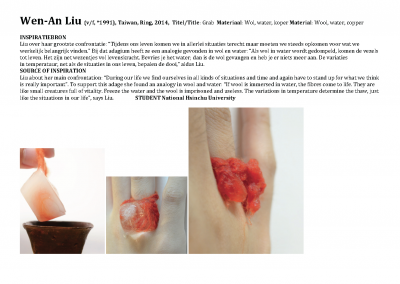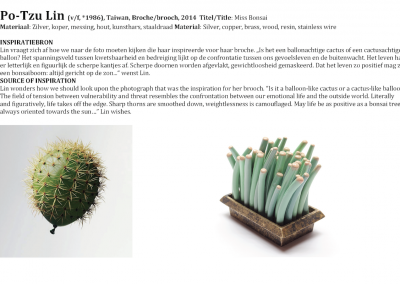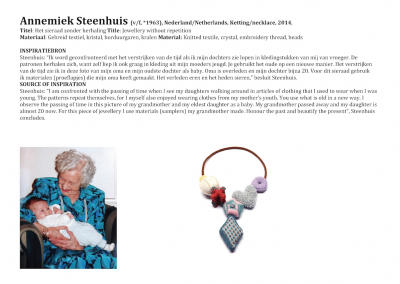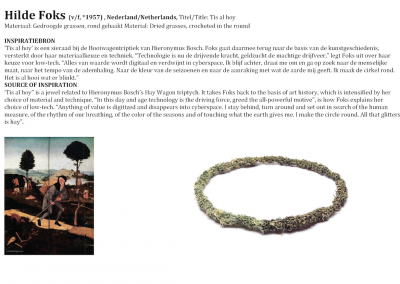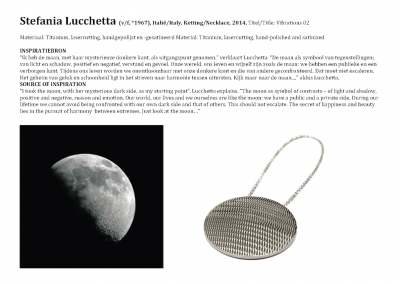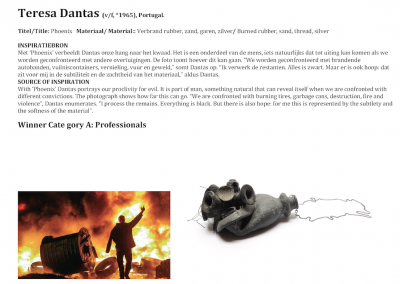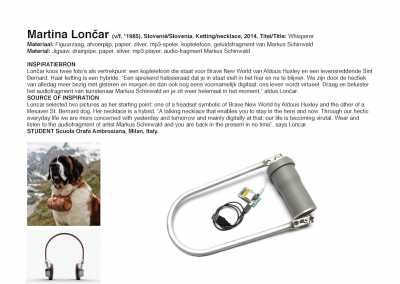2014 Confrontations
More than 300 jewellery designers from all parts of the world submitted work for this sixth edition of NTJ. The jury consisting of six persons first selected the pieces for the exhibition, Subsequently, after extensive deliberations, five winners were chosen from this shortlist: two professional artists and three students. “This exhibition mirrors our times full of trouble spots, ranging from extensive religious wars to geopolitical conflicts, but also the little stories about displaced persons, identity, failure and farewells. The entire range is represented, from the personal intimacy of growing old to social questions such as homophobia. Jewellery designers take a stand, denounce and confront and in doing so implicitly emphasize the human values and behaviour they respect”, says the jury.
Every edition of NTJ has a theme, determined by the members of a professional jury. Previous subjects were Folklore, Symbols of Faith, Intimacy, True Colors and New Nomads. The NTJ exhibition does not only show the jewellery designs, but also pictures of the sources of inspiration accompanied by a personal explanation of the artist. This unique approach makes NTJ more than just an exhibition of objects: the exhibitions make visitors think and talk about what they see.
The jury consists of the following members (in random order):
Liesbeth Den Besten – Independent Art Historian, Chair Foundation Françoise van den Bosch, committee member Art Jewelry Forum, Coach Wearable Senses TU/e.
Drs. Fredric Baas – Curator Stedelijk Museum ’s-Hertogenbosch, Museum of Contemporary Art and Design.
Isabella van den Bos – collector art jewellery, Chair Foundation Art in Business, concept & organization NTJ.
Herman Hermsen – jewellery designer and Professor für Schmuck- und Produktdesign Fachhochschule Düsseldorf, University of Applied Sciences.
Eveline Holsapppel – Curator Applied Art and Design, Arnhem Museum of Modern Art.
Winners
SOURCE OF INSPIRATION “Every day I am confronted with being a Korean in a German – and therefore European – environment”, Kim explains. “As a symbol of this cultural splits I took the German word for fork, ‘Gabel’ and the Korean word for chopsticks, ‘Cheotgarak’. The brooch is built up of the letters of these two words and the difference between the alphabet and the Korean script catches the eye immediately. It is not just the contrast between word and word image. If you try to make out what it says, you get an inkling of the confrontations I experience”, Kim concludes.
SOURCE OF INSPIRATION “The Aztecs believed that darkness begets light and, by extension, life”, Solar recounts. “In their world creation is the result of a confrontation between opposites, for which Mictlantecuhtli, god of the gods, serves as a model. He represents death and life force. This god goes through the process of dying, but also comes back to life”, she explains. “I expressed this belief in my brooch. I mixed resin with graphite, poured the mixture into a cornleaf (corn being the staple food of the Mexicans, ubiquitous in their culture and religion) and fastened this to a fragment of onyx”.
SOURCE OF INSPIRATION The brooch was inspired by a portable screen, like in smartphones: ubiquitous and constantly in use. “These small screens are the most important medium to interact with the world around us and are a source of entertainment”, Cheng and Brovia outline. “The brooch was made of broken optical film taken from a smartphone. It is both transparent and reflective”, the duo explains the literal and figurative aspects. They go one step further: “These screens are made of gold and tantalum; essential minerals that only too often are mined under dubious conditions. This confronts us with the other side of our consumer behaviour…” they conclude.
SOURCE OF INSPIRATION “I want to denounce the social inequality in my home country, Bulgaria”, Macheva recounts. “My work deals with the confrontation between poverty and wealth. The necklace stands for human values and necessities of life. I cut the shape of a diamond from bread as a protest against a society in which some people acquire wealth, luxury and things like diamonds, whereas other are hardly able to keep themselves alive”. she says.
SOURCE OF INSPIRATION With ‘Phoenix’ Dantas portrays our proclivity for evil. It is part of man, something natural that can reveal itself when we are confronted with different convictions. The photograph shows how far this can go. “We are confronted with burning tires, garbage cans, destruction, fire and violence”, Dantas enumerates. “I process the remains. Everything is black. But there is also hope: for me this is represented by the subtlety and the softness of the material”.
